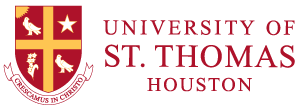Education is a foundation that enables anyone to have a successful career and life. The University of St. Thomas Associate of Applied Science in Pragmatic Studies is a two-year program designed specifically for students who have learning differences that may interfere with academic success in a traditional collegiate setting.
Using Universal Design for Learning (UDL) as an instructional modality, students in this program will spend 12-15 hours per week in the classroom with a cohort of 12-15 students, which will allow for more personalized instruction.
The Associate of Applied Science in Pragmatic Studies prepares and influences socially responsible citizens who will transform and sustain communities. Graduates will possess the knowledge, skills, and dispositions needed to meet postsecondary goals and increase employment outcomes. They will demonstrate that learning differences will no longer be an obstacle for success. Graduates will also be eligible for the new Bachelor of Applied Arts and Science in Social Innovation and Human Service degree.
